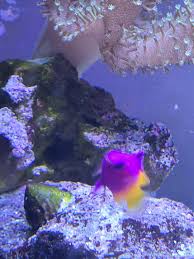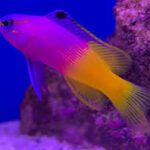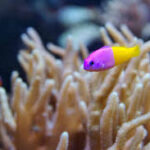The Dragon in Chinese Spring Festival and Lunar New Year Celebrations

The dragon is one of the most iconic and enduring symbols in Chinese culture. Revered as a symbol of power, prosperity, and good fortune, the dragon plays a central role in many aspects of Chinese traditions and customs. Among the most prominent events where the dragon’s presence is felt is during the Spring Festival (also known as Chinese New Year), the most significant and widely celebrated holiday in China. The Spring Festival marks the beginning of the lunar calendar year and is steeped in centuries-old traditions, myths, and festivities. Among these, the dragon dances and related rituals hold a place of immense cultural importance, embodying the spirit of renewal, hope, and the celebration of the new year.
This article delves into the fascinating role the dragon plays in Spring Festival and Lunar New Year celebrations, exploring the history, significance, and various rituals in which the dragon takes center stage. From the famous dragon dance to the symbolic uses of the dragon in decorations and rituals, this article highlights the multifaceted role of the dragon in the celebration of the lunar new year.
The Dragon: A Symbol of Power and Good Fortune
Before exploring its role in the Spring Festival, it is essential to understand the significance of the dragon in Chinese culture. In contrast to the terrifying, often malevolent dragons of Western mythology, the Chinese dragon is a benevolent creature, symbolizing vitality, good fortune, and protection. It is associated with the emperor, who was often referred to as the “Son of Heaven,” and the dragon was considered to embody the emperor’s divine right to rule. Over the centuries, the dragon’s symbolism expanded to encompass natural elements, particularly water, as it was believed that the dragon controlled the rains, which were crucial to agriculture in ancient China.
The dragon, with its long, serpentine body, powerful claws, and fierce eyes, is believed to possess the strength to drive away evil spirits and bring prosperity, peace, and harmony. These associations make it a natural emblem for the Spring Festival, a time of renewal and celebration of the coming year.
The Dragon and the Chinese New Year: A Time of Renewal
The Spring Festival marks the end of winter and the arrival of spring, a time of renewal, rejuvenation, and hope. It is a celebration of family, unity, and new beginnings. According to Chinese tradition, each year is associated with one of the twelve zodiac animals, and the festival celebrates the qualities of that year’s animal. However, no matter which animal rules a particular year, the dragon is always viewed as a powerful force, ushering in a new season of good fortune.
The dragon represents both the mythical and the natural worlds, bridging the two and emphasizing the importance of harmony between heaven, earth, and mankind. Its role during the Spring Festival is one of spiritual protection and the promise of prosperity and blessings for the coming year.
The Dragon Dance: The Heart of Spring Festival Celebrations
Perhaps the most well-known and widely recognized dragon-related tradition during the Spring Festival is the dragon dance. The dragon dance is a lively and colorful performance that takes place during the Lunar New Year celebrations and is performed in cities and towns across China and in Chinese communities around the world.
The dragon dance involves a team of performers who manipulate a large, intricately designed dragon figure, often made of lightweight materials like silk and bamboo, to simulate the movements of a dragon. The performers use poles to lift and move the dragon, which undulates and twists through the streets, creating the illusion of a living, breathing creature. The dragon’s movements are accompanied by the sounds of drums, cymbals, and gongs, all of which serve to enhance the festive and energetic atmosphere.
The dragon dance is believed to bring good fortune and drive away evil spirits. It is a common sight during the Spring Festival, as people perform the dance in public spaces such as streets, parks, and temples, often in front of large crowds. The dragon is thought to bring good luck to those who participate in or witness the dance, and it is believed that its movements can also bless the surrounding area, ensuring prosperity for the community.
The Significance of the Dragon in Spring Festival Decorations
The presence of the dragon is also felt in the visual aesthetics of the Spring Festival. During this time, Chinese homes and streets are decorated with various symbols of good fortune, including lanterns, couplets, and traditional artwork. Dragons frequently appear in these decorations, often rendered in vibrant colors and detailed patterns.
Red lanterns adorned with dragon imagery are a staple of Spring Festival decorations. The color red is associated with good luck and is believed to ward off evil spirits. Lanterns featuring dragon designs symbolize the strength, vitality, and power of the dragon, inviting blessings and prosperity into the home. These decorations are commonly seen hung at doorways, along streets, and in businesses, creating a festive atmosphere that signifies the arrival of the new year.
In addition to lanterns, spring couplets (chunlian), which are pairs of poetic phrases written on red paper, are often inscribed with dragon motifs. The couplets are placed on doorways and walls, and the words inscribed are meant to bring good fortune and positive energy for the year ahead. In some cases, the characters written on the couplets are intertwined with images of dragons, further emphasizing the symbolic connection between the mythical creature and the blessings of the new year.
The Dragon and Fireworks: A Symbol of Power and Protection
In many regions of China, the Spring Festival celebrations are incomplete without the display of fireworks. The use of fireworks during the Spring Festival has a long history, and it is believed that the loud sounds and bright lights of fireworks help to scare away evil spirits and bring in good fortune. The dragon is often featured in the fireworks displays, either through the design of the fireworks themselves or through the way in which the fireworks are arranged and choreographed.
Dragon-shaped fireworks are especially popular during the Lunar New Year. These fireworks are designed to mimic the appearance of a dragon, and when they explode, they create a spectacular show of light and sound that fills the night sky. The dragon’s powerful image is reinforced in these fireworks, symbolizing the power of nature and the ability to drive away malevolent forces.
In some regions, the dragon-shaped firecrackers are also used as part of the New Year’s festivities. These firecrackers are designed in such a way that, when lit, they create a long, serpentine trail of sparks, resembling the undulating form of a dragon. As the dragon moves and twists through the air, it is thought to ward off evil and usher in a year of prosperity and success.
The Dragon and Traditional Spring Festival Foods
Food plays a central role in the Spring Festival celebrations, with families gathering together to enjoy meals that symbolize luck, abundance, and unity. The dragon’s presence is subtly reflected in the food traditions of the holiday, particularly in the shapes and ingredients used.
For example, during the Spring Festival, many families prepare dumplings (jiaozi), a traditional food that is believed to bring wealth and good fortune. Some dumplings are made in the shape of golden ingots, symbolizing the promise of prosperity. While the dumplings themselves are not shaped like dragons, their association with wealth and abundance ties them to the dragon’s symbolism of power and fortune.
Another popular dish is nian gao, a sticky rice cake, which is believed to bring growth and progress in the new year. The texture and shape of the rice cake can evoke the dragon’s serpentine body, further connecting the dragon to the themes of renewal and prosperity.
The Dragon’s Role in the Lantern Festival
The Lantern Festival, which marks the end of the Spring Festival period, is another occasion where the dragon plays a prominent role. The festival is known for its colorful displays of lanterns, parades, and performances. Dragon dances are often a key feature of the Lantern Festival, bringing the energy and excitement of the Spring Festival to a grand conclusion. Large, intricately designed dragon-shaped lanterns are displayed during the event, lighting up the streets with their vibrant colors.
In addition to the dragon dance, the Lantern Festival also includes the tradition of dragon boat racing in some regions, where teams race in long, narrow boats designed to resemble dragons. These races symbolize the strength and vitality of the dragon, as well as the desire for a good harvest in the coming year.
Conclusion
The dragon’s role in the Spring Festival and Lunar New Year celebrations is deeply ingrained in Chinese culture. As a symbol of power, good fortune, and renewal, the dragon is present in many of the holiday’s most iconic rituals, including the dragon dance, decorations, fireworks, and traditional foods. Its significance goes beyond mere representation; it is a living, breathing force that symbolizes the wishes of the people for a prosperous, peaceful, and joyful year.
Through its dynamic presence in the Spring Festival, the dragon continues to inspire hope and good fortune, linking generations together in a celebration of life, culture, and tradition. As the Chinese New Year continues to be celebrated worldwide, the dragon will remain at the heart of the festivities, embodying the spirit of unity, renewal, and the promise of a brighter future.

